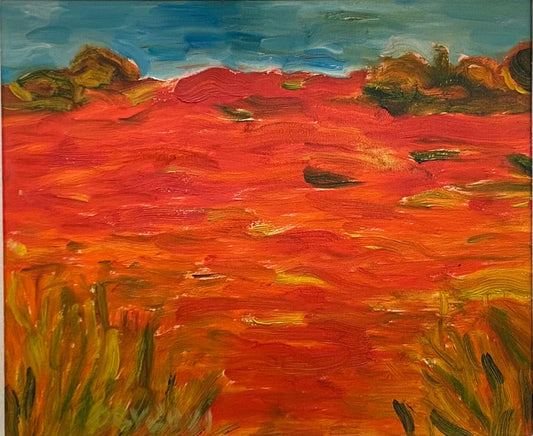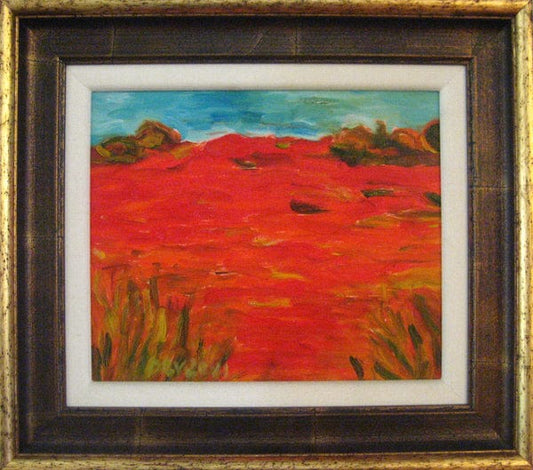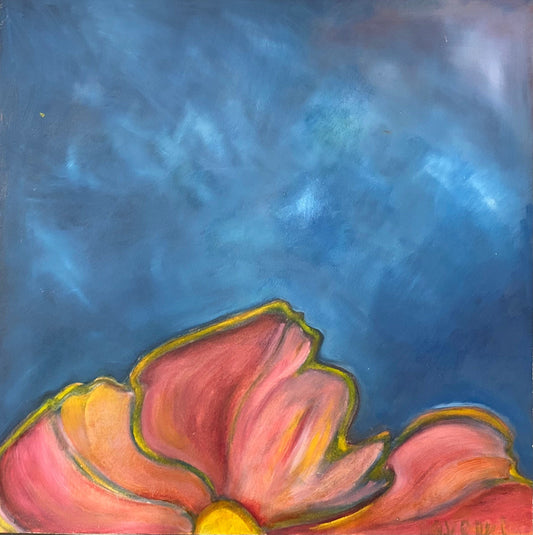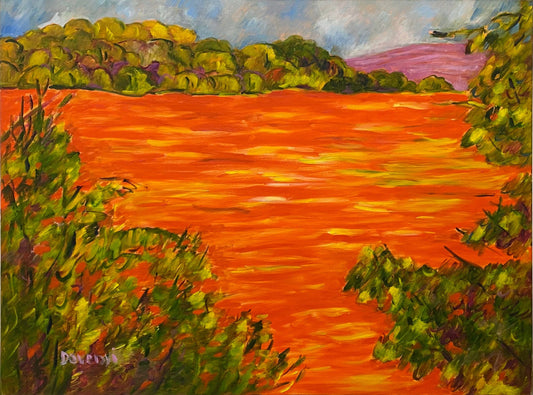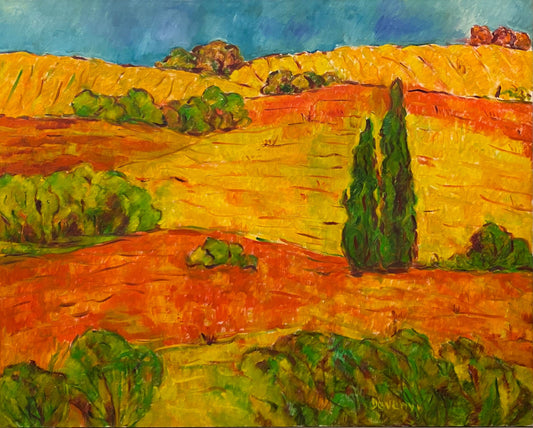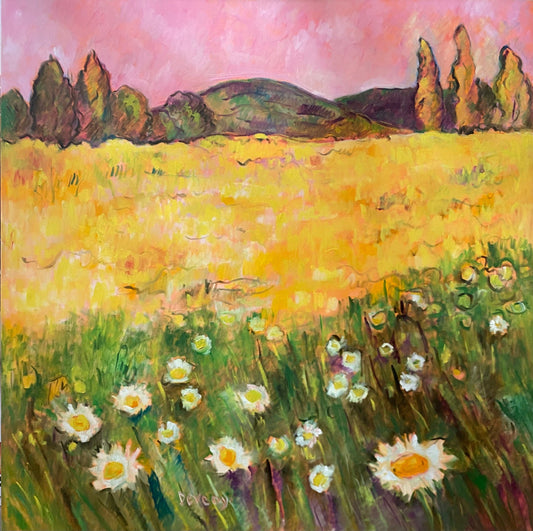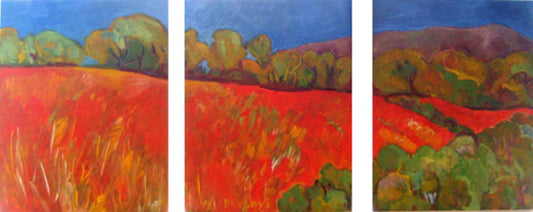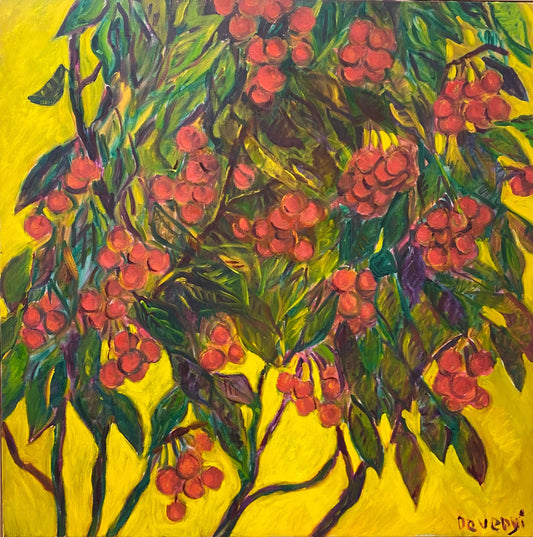Margaret Devenyi
-
Close-Up #5, framed
Vendor:Margaret DevenyiRegular price $870.00 CADRegular priceUnit price / per -
Skyscape 7
Vendor:Margaret DevenyiRegular price $1,600.00 CADRegular priceUnit price / per -
The Colour of May
Vendor:Margaret DevenyiRegular price $3,600.00 CADRegular priceUnit price / per -
A Sea Of Yellow
Vendor:Margaret DevenyiRegular price $2,000.00 CADRegular priceUnit price / per -
The Hills of Provence
Vendor:Margaret DevenyiRegular price $4,600.00 CADRegular priceUnit price / per -
The Palette of Autumn
Vendor:Margaret DevenyiRegular price $5,000.00 CADRegular priceUnit price / per -
Field of Wild Daisies
Vendor:Margaret DevenyiRegular price $4,500.00 CADRegular priceUnit price / per -
Beautiful Sky triptych
Vendor:Margaret DevenyiRegular price $4,200.00 CADRegular priceUnit price / per
-
Margaret Devenyi
-
Scientist and artist Margaret was a rare combination. Born on November 2, 1930 in Hungary, she died instantly of a heart attack on April 8, 2010 in Vancouver Canada. Aged 80, wife, mother, grandmother, great grandmother. In her 54 years in Canada she became not only the scientist she was trained to be, but an internationally celebrated artist. In the late 1970’s she became the first Canadian artist in the collection of one of the largest American corporations (3M Company that eventually purchased 6 of her large paintings to be with Frank Stella, Kuhn etc.). In 1987, the Hungarian Government gave her a solo exhibition to recognize the fact that she was an artist and a scientist. She had 26 solo exhibitions on two continents and is permanently represented by Art Works Gallery in Vancouver.
Born in Hungary, Margaret had her share of history: World War II, ten years of Communism, the 1956 Hungarian Revolution. We arrived to Canada and got married in Edmonton. When in 1958 we finally settled down in Victoria, the peace and calm we found in our wonderful new country can be measured by her decision to become an artist. A research scientist in Hungary and lecturer for 40 years at McGill, University of Victoria and UBC – how did she have the courage to pick up the brush? The roots seem to go very deep.
She was born into an isolated farmhouse. To have a horse was the most important possession. When Margaret was two years old, her proud father put the little girl on the back of the new horse: called Spiral. For reasons of his own, the horse jumped away and took the helpless little girl for a long, speedy, dangerous ride. The father could not do anything. But this two years old had the presence of mind to grab the mane of the horse and lie as low as she could. Ultimately nothing happened. This was a moment that ultimately changed her life.
In those moments on the horse, Margaret lost some of her trust in her parents, in other creatures and in life in general. But all that was good. It made her aware of the need of making her own decisions, to be part of everything, not just a spectator in your own life, as so many of us are. This is in a way the foundation of her art. Deep desire to learn things, to discover things and in a real sense to be in charge of your own life. She considered this the proudest moment of her life and recounted it many times.
As a young girl, Margaret loved to go to church. But she never prayed. For her, the church simply meant a place where everything was different. In our ordinary, daily existence, life is much too daily, frustrating and often meaningless. The church – even if not the house of a supernatural being is always a house of art. It is a house, where all the senses get stimulated. The ritual of the church is a celebration of a new dimension, something beyond ordinary life. But going to the church also demanded that you have to unconditionally trust in others. That Margaret, was not able to do. She could only trust art. She centered herself on beauty. In our home, there were always candles, incense burning, floating music, flying images stimulating every moment of our life. She believed that this is the ultimate meaning of art. All lives are ordinary. Only art can make life extraordinary.
As a young adult, she read Siddharta by Hesse. She loved it so much, that she decided to hand-copy all the 152 pages. But, Margaret considered Siddharta not as a monk, but as an artist. She only believed in Beauty and in the full utilization of herself, of the brains we all have. Leonardo DaVinci, the greatest scientist and artist had only two brains too. But he had used them as one. Margaret called this the DaVinci Difference. This is what the 1987 exhibition in Budapest recognized in her.
Always a scientist. Always an artist. This extraordinary self confidence came from her own sense of balance, from her sense of trust in herself. It was not always easy. She – as all of us – had many more “Spiral” horses in her life. But when she found her balance – it was beautiful. Anyone who has seen her smile, or looked at her images, will cherish it as a rare gift.
The summer of 2009 was spent knitting baby outfits for her upcoming great grandson. Her wish was to actually see him. This “last wish” was granted to her by fate. In November, she flew to Berlin and arrived on the very day Bascha did.
Written by Margaret’s husband, Denes Devenyi

